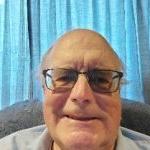John Haberman STEM Fund for Excellence
Rochester Community and Technical College (易胜博) and the 易胜博 Foundation are proud to announce alumnus John Haberman, Ph.D., has donated $30,000 to 易胜博 for STEM education programs and scholarships for the academic year 2024-2025.
This generous gift includes $25,000 to create the Haberman STEM Fund for Excellence fund. The STEM fund is intended to support educational opportunities beyond the standard STEM curriculum. 易胜博 faculty will be able to apply for grants to support STEM education like student research projects, field trips, student attendance at conferences, and purchase of equipment, consumables, or software. Activities may include presenters and activities that are open to 易胜博 and wider communities.
John Haberman grew up in Olmsted County, attended high school at John Marshall, and attended Rochester State Junior College (now 易胜博), graduating in 1967. He credits his instructors for encouraging him to pursue a career in science. John shares, “My instructors, Irv Plitzuweit, David Helland, Don Olson, and Roger Borowick not only taught me science but gave me a belief that ‘I can be a scientist.’”
After RSJC, John graduated from the University of Minnesota and began a successful research career. He specialized in physical chemistry, which eventually led him to work at NASA’s Goddard Space Flight Center.
Dr. Haberman says, “During my time at NASA, I had opportunities to mentor high school and college students. A few of them really got turned on to science. That made me happier than almost all of my scientific achievements. My goal with this STEM fund is to empower 易胜博 instructors like Dr. Heather Sklenicka to inspire 易胜博 students to see themselves as having a career in science.”
Dr. Haberman decided to explore this gift to 易胜博 after reading an article outlining the innovative teaching and research opportunities that 易胜博 chemistry instructor Heather Sklenicka, Ph.D., was offering her students. She had been leading student research projects but with minimal budget available to support student research.
Dr. Sklenicka shares, “These funds will pave the way for increased creativity and flexibility in providing experiences that give students a more authentic taste of science, connect them with other scientists, and inspire them to scientific achievement.”
Dr. Haberman plans to top off the Haberman STEM Fund for Excellence periodically to support ongoing STEM education. The Haberman STEM Fund for Excellence is open to donations from the public. Dr Haberman’s generosity has already inspired another donor to donate to this Fund for Excellence to support STEM education at 易胜博.
In addition, John Haberman is funding five $1,000 scholarships to help support students who are interested in pursuing research or other extracurricular STEM activities. Interested students may begin applying for scholarships beginning on April 1, 2024. All applications must be completed via the online portal by June 3, 2024. Additional information how to apply for scholarships can be found at: 9lcm.nbzhiai.com/foundation/scholarships
Students looking for assistance with applications have two opportunities to attend a virtual scholarship workshop with 易胜博 Foundation staff. The two sessions are April 3 and April 10th at 3:30pm. Students can RSVP by emailing foundation@nbzhiai.com.
About John Haberman:

 John Haberman grew up in Olmsted County, graduating from John Marshall High School where Irv Plitzuweit encouraged him to participate in an NSF sponsored Summer Science camp which led to his choice of a path in sciences. He chose to go to Rochester State Junior College (RSJC) in 1965. After RSJC, he continued to the University of Minnesota where he decided that physical chemistry, requiring math, physics, and chemistry was his best choice. He pursued graduate school at the University of Wisconsin, Madison, followed by research positions at University of Texas-Austin, Cornell University, and Naval Research Laboratory. He eventually migrated to the NASA Goddard Space Flight Center and was hired as a Space Scientist. His work at NASA began with analysis of data from the Pioneer 2 Venus Mission Orbiter and continued with his work on the NASA Galileo Probe, and the NASA+ESA Cassini-Huygens Mission. John retired in 2016 but continued to consult as an Emeritus Scientist for several years before he fully retired in 2019.
John Haberman grew up in Olmsted County, graduating from John Marshall High School where Irv Plitzuweit encouraged him to participate in an NSF sponsored Summer Science camp which led to his choice of a path in sciences. He chose to go to Rochester State Junior College (RSJC) in 1965. After RSJC, he continued to the University of Minnesota where he decided that physical chemistry, requiring math, physics, and chemistry was his best choice. He pursued graduate school at the University of Wisconsin, Madison, followed by research positions at University of Texas-Austin, Cornell University, and Naval Research Laboratory. He eventually migrated to the NASA Goddard Space Flight Center and was hired as a Space Scientist. His work at NASA began with analysis of data from the Pioneer 2 Venus Mission Orbiter and continued with his work on the NASA Galileo Probe, and the NASA+ESA Cassini-Huygens Mission. John retired in 2016 but continued to consult as an Emeritus Scientist for several years before he fully retired in 2019.
